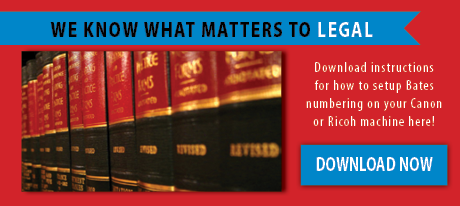Blog
The Stuff
Protecting Patient Information with PDF Encryption
Posted On January 6, 2012 By Scott Guercio
I recently blogged about the use of PDF/A in the legal industry, and it is certainly used in other types of businesses as well. Yet, there is another format of PDF file that is equally as important to many organizations today, and in particular, the medical industry–the encrypted PDF.
It is not surprising that the need to protect PDF files has become an area of great importance for medical offices, because of the Health Insurance Portability and Accountability Act (HIPAA). HIPAA was established in 1996 to protect health insurance coverage for workers and their families when they change or lose their jobs. It also required the establishment of national standards for electronic health care transactions and national identifiers for providers, health insurance plans, and employers. The standards are meant to improve the efficiency and effectiveness of the nation’s health care system by encouraging the exchange of health and patient data in an electronic format. It is in these standards that medical offices are required to address the security and privacy of medical data.
PDF files have certainly become the universal standard for the exchange of electronic images of documents. However, because PDF files can be easily read from any number of sources, there needs to be a way to protect the information contained within the file, from anyone who might intercept the file in transit. Enter the encrypted PDF.
The concept is that the PDF file can be “locked” from viewing, with a password, which encrypts the file. The recipient can only view and “unlock” the data by entering the password, which then decrypts the file. The strength of the encryption can be determined when the encrypted PDF file is created and can include the levels up to 256-bit. The number of bits refers to the number of digits (ones and zeros) in the encryption algorithm. Simply put, a larger number of bits means a larger number of possible combinations of digits used in the encryption code, making it more difficult to crack.
Here at Advance – The Document Specialists, we offer several methods for creating encrypted PDF files, including both hardware and software solutions. For our hardware options, we proudly represent Canon and Ricoh/Savin, which are number one and two in worldwide market share of multifunctional devices (MFDs). Both manufacturers offer the ability to scan paper documents into an encrypted PDF format, using a password, up to a 128-bit encryption level.
We also provide Nuance’s eCopy ShareScan solutions, which integrate with both Canon and Ricoh/Savin MFDs to provide custom scanning workflow, including scanning to an encrypted PDF.
Both solutions offer a very efficient method for creating encrypted PDF files, by allowing users to email paper based documents, in a protected electronic format, with the push of a button. For our clients who have existing electronic documents that need to be converted to the encrypted PDF format, we offer several Nuance software products. They include Personal Paperless Document Manager (PPDM), eCopy Paperworks and PDF Pro Office. These software-based solutions offer up to 256-bit encryption.
